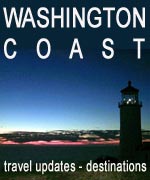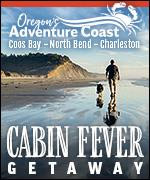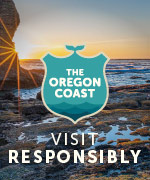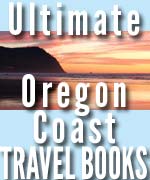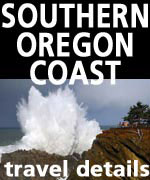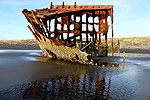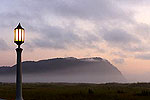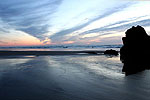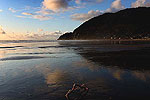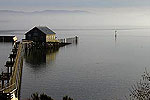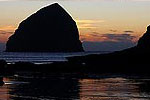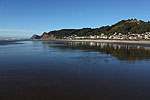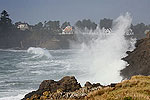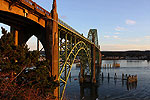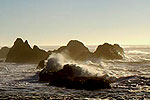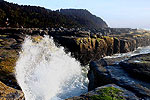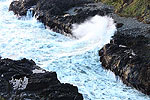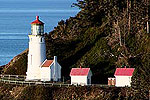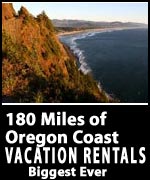Unique, Sporadic Oregon Coast Phenomena: When Headlands 'Wear a Hat' And Why
Published 12/09/25 at 8:35 p.m.
By Oregon Coast Beach Connection Staff
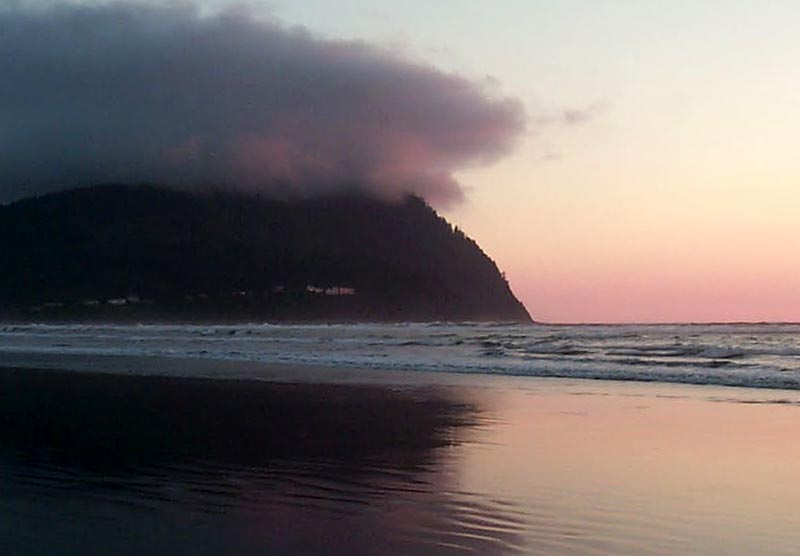
Includes exclusive listings; some specials in winter
In Cannon Beach:
Includes rentals not listed anywhere else
In Manzanita, Wheeler, Rockaway Beach:
Some specials for winter
In Pacific City, Oceanside:
Some specials for winter
In Lincoln City:
Some specials for winter
In Depoe Bay, Gleneden Beach:
Some specials for winter
In Newport:
Look for some specials
In Waldport
Some specials for winter
In Yachats, Florence
Some specials for winter
Southern Oregon Coast Hotels / Lodgings
Reedsport to Brookings, places to stay; winter deals
(Oregon Coast) – You’re on the beach, relaxing near the waves, and you look over at one of the headlands nearby, like Tillamook Head between Seaside and Cannon Beach, Depoe Bay’s Cape Foulweather.... or maybe Neahkahnie Mountain at Manzanita. You suddenly notice something odd: you’re seeing a single cloud or just a few clouds hovering above the headland but strangely nowhere else. (Above: a lone cloud formation hovering above Seaside's Tillamook Head - something slightly rare and unique).
It’s as if those headlands along the Oregon coast or even Washington coast appear to be generating their own little weather in a way – and it turns out that idea is not far off.
Some have nicknamed the phenomenon “wearing a hat.” Meteorologists usually call it cape clouds – if they call it anything at all. There’s technically no name for it.
Yet it’s very real, according to Tyler Kranz, a meteorologist with the National Weather Service (NWS) in Portland - and at the very least not super common.
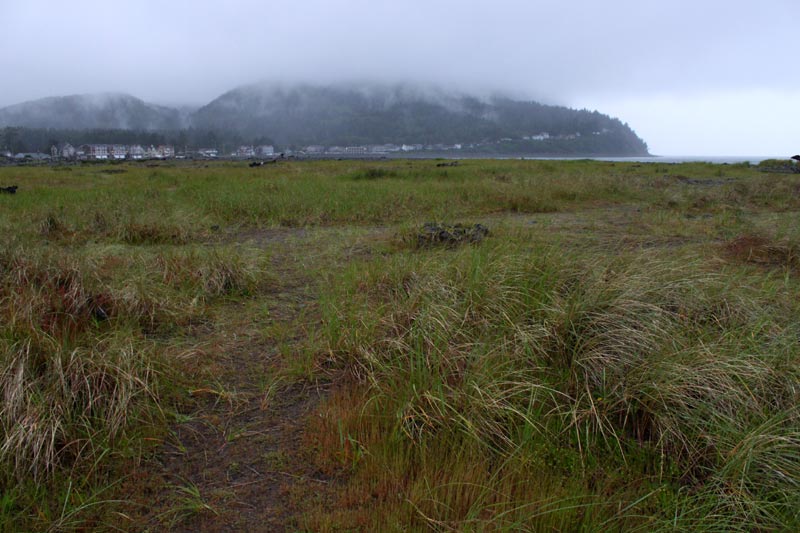
Above: this is not the same situation but more common. Here, Tillamook Head is simply high enough to pierce low stratus clouds
There are actually two scenarios you may be looking at, and it’s important to see the distinction. In one case, it’s common for clouds along the Oregon coast to get low enough that they bump into headlands. So yes, you’ll see scenes (like above) where a headland is not only wearing a hat, but maybe put on a blanket.
However, then there’s this lesser-seen situation.
“The less common scenario is where only the headland has clouds and the rest of the ocean is clear,” Kranz said. “It’s definitely a thing that happens, and there’s a meteorological reason for that.”
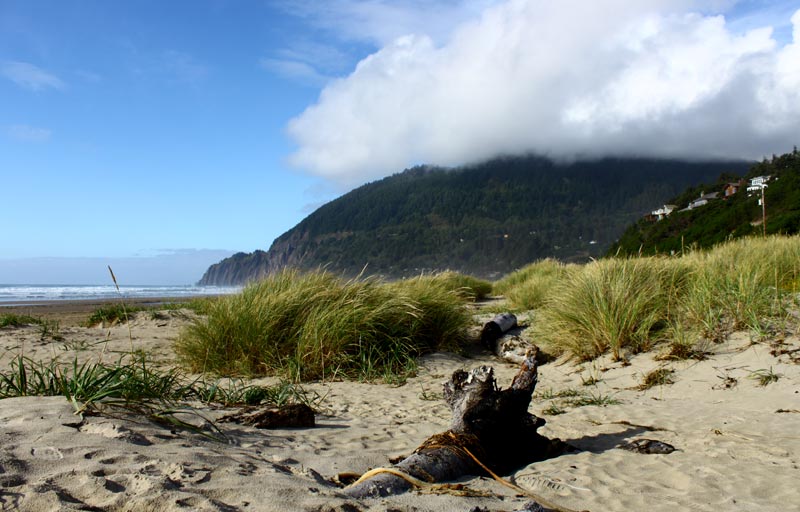
Manzanita's Neahkahnie Mountain wearing a hat
In a nutshell, several unique weather components have to coincide at the same moment. First, you have cool air zipping along the beach at a quick pace, and then suddenly it hits a headland. If humidity or dewpoint conditions are just right, the air will zoom up the headland, cool off even more and boom – become a cloud.
“Essentially you have cool, moist marine air flowing, a decent flow, and it’s flowing along the beach with no obstruction and all of a sudden it hits this higher terrain,” Kranz said. “So it has essentially two options. The air can go up and over the higher terrain; or if the atmosphere is too stable, the flow too weak or the terrain too high, it ends up going around then, rather than up and over.”
If the air flow zips up the slope, then it has a chance to become a cloud system all its own.
“So the scenario when you get the cape clouds – or ‘wearing a hat’ - would be when the air is making it up and over the higher terrain, being forced over and as it moves up it cools down a little bit all the way to saturation,” he said. “So essentially the temperature is cooling down to dewpoint temperature, which makes relative humidity 100 percent. In other words, you have a cloud.”
That is, in essence, what a cloud is: 100 percent relative humidity – or saturation or full dewpoint.
Kranz takes a while to ponder if there’s an actual meteorological term for all this action on a headland and says there isn’t.
“We call’em cape clouds but 'wearing a hat' sounds more exciting,” he said.
So what set of conditions have to be met to create this phenomena? It’s several things that have to be just right.
“You need air that’s already moist near the surface, so relative humidity already has to be pretty close to saturation but not enough to produce a cloud,” Kranz said. “So in those scenarios it wouldn’t take much cooling to get temps down to dewpoint and have your RH (relative humidity) to go up to 100 percent.”
Kranz said the winds have to be strong enough to force the air up and over the higher terrain – that’s the first ingredient. Then the air around the headland – or at least up top – has to be fairly close to saturation, but not quite there.
That way, the moist air zooming up the headland becomes even cooler and reaches 100 percent saturation, thus giving us that unique cloud formation over places like Neahkahnie or Tillamook Head.
Some of this depends on the size and shape of the headland. You won’t see it with Newport’s Yaquina Head because it’s not tall enough. Yachats’ Cape Perpetua is quite tall but doesn’t jut out far enough. Cape Foulweather is only 500 feet high and does not appear to have this happen much. Cape Blanco and Cape Sebastian on the southern coast have some reputation for this, while it definitely is more common for Cape Lookout near Oceanside to be seen smothered in a white blob. It’s a couple miles worth of a promontory.
Oregon Coast Hotels for this event -
Does it matter from which direction the air is flowing when it comes to “cape clouds?” There’s only a difference for the person viewing it, Kranz said, but not in the general geographical sense.
“This would effect which side would get more clouds,” he said. “So if there’s a moist southerly flow, your clouds start to form on the southern slopes of these peaks. Then on the northern side, you’d see clouds just being blown off to the north aloft, and quickly dissipating.”
In other words, whichever side of the peak the winds are blowing into will get more clouds.
If it’s coming from the south, it’s all vice versa: the southern side would see more puffy white stuff above the headlands. See Oregon Coast Weather - Washington Coast Weather
Oregon Coast Vacation Rentals
Oregon Coast Lodging Specials
OREGON COAST HOTEL REVIEWS (hit refresh to see different reviews)
April Gets Even Cheaper Midweek at Depoe Bay, Lincoln City: Oregon Coast Deals
Off-season rates plus more at Keystone Vacation Rentals. Depoe Bay lodging specials, Lincoln City hotel reviews, Newport hotel reviews
5 Astounding Balcony Views on Oregon Coast
Exceptional views and finds around Cannon Beach, Lincoln City, Newport. Cannon Beach hotel reviews, Manzanita hotel reviews, Lincoln City hotels, Newport hotel reviews
Oregon Coast Vacation Rentals - 363 Miles of Rentals
Oregon Coast Vacation Rentals, vacation rental reviews, hotel reviews, vacation rental news
A Less Expensive May in Newport: Handful of Oregon Coast Inns Still Offering ...
Inn at Nye Beach, Nye Beach Cottages, Ocean House BnB: Newport hotel specials. Newport hotel reviews
More About Oregon Coast hotels, lodging.....
More About Oregon Coast Restaurants, Dining.....
 |
Washington Coast / Oregon Coast Articles (stories are random: hit reload to see different articles)
2nd Sinkhole on Top of Cape Kiwanda Spells Bigger Dangers, Says Oregon Coast GeologistA larger chunk of this headland may collapse, geologist says. Science
One Oregon Coast Town: Two Rugged Attractions Make for Layered U.S. Travel Destination
One sits on another: a lighthouse and its craggy headland. Newport
Three Curious Weather Phenomena of Oregon Coast: Manzanita, Cape Blanco, Headland 'Hats'
Some rather astounding atmospheric elements in the world of beach science
Cape Kiwanda's Wilder Sides in Images: Killer Oregon Coast Sights
Comparatively small headland that is a land loaded with finds, even sounds
Video: Depoe Bay's Boiler Bay Headland A Hypnotizing Chunk of Oregon Coast
Depoe Bay, Boiler Bay and its state park, Boiler Bay State Scenic Wayside, sit huddled together
A Wowing Fusion of Oregon Coast History and Rugged Chaos at Newport
The tallest lighthouse and it sits on a headland that's chock full of distinctive aspects, travel tips, Yachats, Pacific City
Rumors, Odd Facts, Fiery to Tragic History of Oregon Coast Headlands
They have tales to tell: Oceanside, Cannon Beach, Coos Bay, Port Orford, Newport, Yachats, Depoe Bay, geology
What is Tillamook Head Geologically? Deep Inside N. Oregon Coast Headland at Seaside / Cannon Beach
All that lava, over numerous eruptions, filled up an underwater canyon. Sciences
Back to Oregon Coast
Contact Advertise on Oregon Coast Beach Connection
All Content, unless otherwise attributed, copyright © Oregon Coast Beach Connection. Unauthorized use or publication is not permitted






